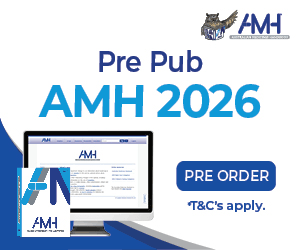One in four people with incontinence do nothing to prevent skin issues, and one in three never seek medical care for dermatitis.
Clinicians are therefore the critical touchpoint for prevention, education, and product selection (Dynata-Ontex, 2025)
Maintaining skin integrity is one of the most important pressing clinical challenges in continence care. Prolonged exposure to moisture, enzymes, friction, and pH shifts can lead to incontinence-associated dermatitis (IAD), and compromised skin barrier, which in turn increases risk of infection, discomfort, pressure injury and reduced quality of life. Evidence indicates that nearly 47% of people with urinary incontinence report dermatitis in the perineal area (Dynata-Ontex, 2024).
For clinicians, the challenge is not only managing the physiological aspects of incontinence but also protecting fragile skin, preventing social isolation, and preserving dignity.
Two solutions—iD Pants with Y-Core technology and the Serenity three-step skin care range—offer a combined approach to tackling this challenge. Together, they integrate advanced absorbent technology with dermatologically tested skincare, supporting clinicians in delivering both comfort and clinical outcomes.
The Clinical Burden of Incontinence and Dermatitis
Urinary incontinence affects around 30% of the population, with prevalence increasing in older adults (Dynata-Ontex, 2024).
Beyond leakage, the impact on skin is significant: moisture, friction, and pH changes predispose to IAD, which manifests as erythema, breakdown, pain, and infection risk (Beeckman et al., 2021).
The Dynata-Ontex 2024 study across 2,545 respondents in Europe and the UK highlights this burden clearly:
- 47% of people with incontinence had experienced dermatitis on or near the perineal area.
- 94% reported discomfort from dermatitis.
- 70% believed dermatitis caused embarrassment
- 60% said it led to social withdrawal.
These findings reinforce what nurses observe daily: incontinence is not just a continence issue, but a skin, dignity, and quality-of-life issue.
iD Pants: Clinical Technology in Everyday Use
The new iD Pants incorporate Y-Core technology, a design that channels fluid rapidly away from the skin. Independent testing shows they deliver 2.5 x faster absorption than standard cores, providing a consistently drier surface.
Rapid fluid acquisition and retention are not marketing luxuries—they are central to preventing IAD. Studies confirm that longer skin wetness increases risk of dermatitis and infection, while advanced cores with superabsorbent polymers reduce rewet and maintain skin dryness (Gray & Giuliano, 2018; Beeckman et al., 2021).
By locking fluid away faster, iD Pants help nurses safeguard skin integrity,
Botanicals for Skin Health
Beyond absorbency, iD Pants include a top sheet impregnated with camomile and vitamin E.
- Camomile has recognised anti-inflammatory and antioxidant properties, shown to reduce erythema and soothe irritated skin in clinical dermatology (Srivastava et al., 2010).
- Vitamin E (tocopherol) is a lipid-soluble antioxidant that supports barrier repair and protects against oxidative stress (Thiele et al., 2015).
Breathability and Comfort
iD Pants also use breathable back sheets, allowing moisture vapour exchange and preventing a humid microclimate. Breathability is a proven factor in reducing IAD severity and maintaining patient comfort (Gray & Giuliano, 2018).
Serenity Skin Care: A Three-Step Protocol
Containment products are only part of the story. Effective nursing care also requires structured skin care routines.
The Serenity range provides a dermatologically tested three-step protocol:
- Cleanse – Gentle cleansers remove irritants without stripping natural oils.
- Moisturise – Hydrating lotions restore barrier function, vital for ageing or fragile skin.
- Protect – The TGA-approved Serenity Barrier Cream, containing zinc oxide and panthenol, forms a physical shield against moisture and irritants while promoting healing.
Barrier products with zinc oxide are supported by strong clinical evidence for IAD prevention. A systematic review confirmed that zinc oxide-based creams reduce skin irritation and are well tolerated in older adults (Beeckman et al., 2021). Panthenol and glycerin, also present in Serenity, aid in hydration and repair, further supporting skin resilience.
To find out more about the serenity care range visit ontexhealthcare.com.au/product-category/skin-health
Why This Matters For Nurses
- Prevention: Faster absorbency and protective botanicals reduce exposure to irritants, while barrier creams prevent breakdown.
- Comfort: Patients experience drier, softer skin and reduced discomfort, contributing to dignity and quality of life.
- Efficiency: Products that perform effectively reduce time spent on reactive wound care, allowing nurses to focus on holistic patient wellbeing.
Conclusion
New iD Pants and Serenity skin care together, they represent a comprehensive, evidence-aligned approach to incontinence care that empowers nurses to do what they do best: preserve health, dignity, and comfort.
For more information and to order free samples visit idsecret.com.au
References
Beeckman, D., Van Damme, N., Schoonhoven, L., et al. (2021). Prevention and treatment of incontinence-associated dermatitis: A systematic review. Journal of Wound, Ostomy and Continence Nursing, 48(1), 29–39.
Gray, M., & Giuliano, K. K. (2018). Incontinence-associated dermatitis, characteristics and relationship to pressure injury: A multisite epidemiologic analysis. Journal of Wound, Ostomy and Continence Nursing, 45(1), 63–67.
Srivastava, J. K., Shankar, E., & Gupta, S. (2010). Chamomile: A herbal medicine of the past with a bright future (Review). Molecular Medicine Reports, 3(6), 895–901.
Thiele, J. J., Ekanayake-Mudiyanselage, S., & Packer, L. (2015). Vitamin E in human skin: Organ-specific physiology and considerations for its use in dermatology. Free Radical Biology & Medicine, 29(3–4), 231–240.
Ontex & Dynata. (2024). Prevalence of Dermatitis in Incontinence Patients (Survey of 2,545 respondents, Europe/UK)








